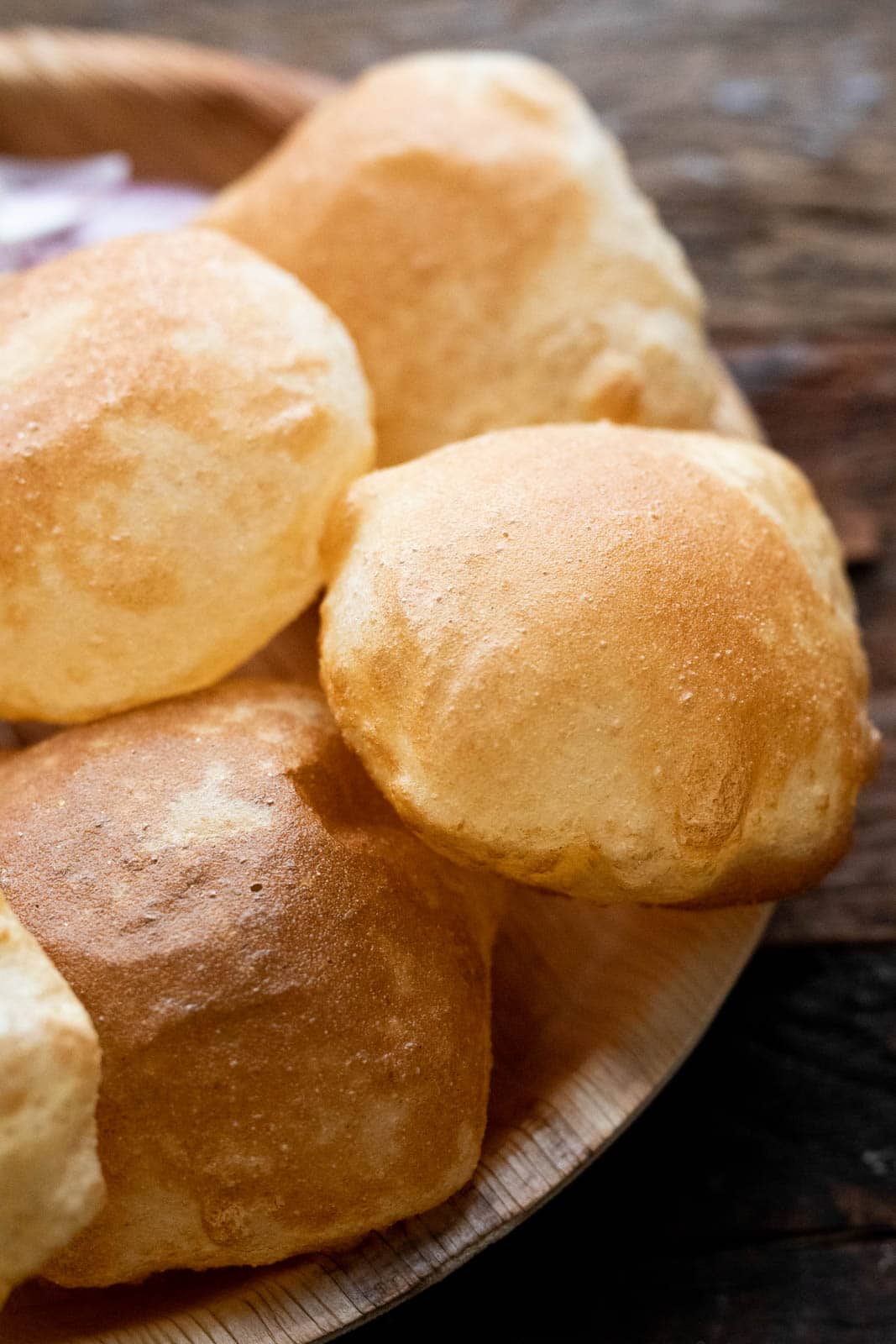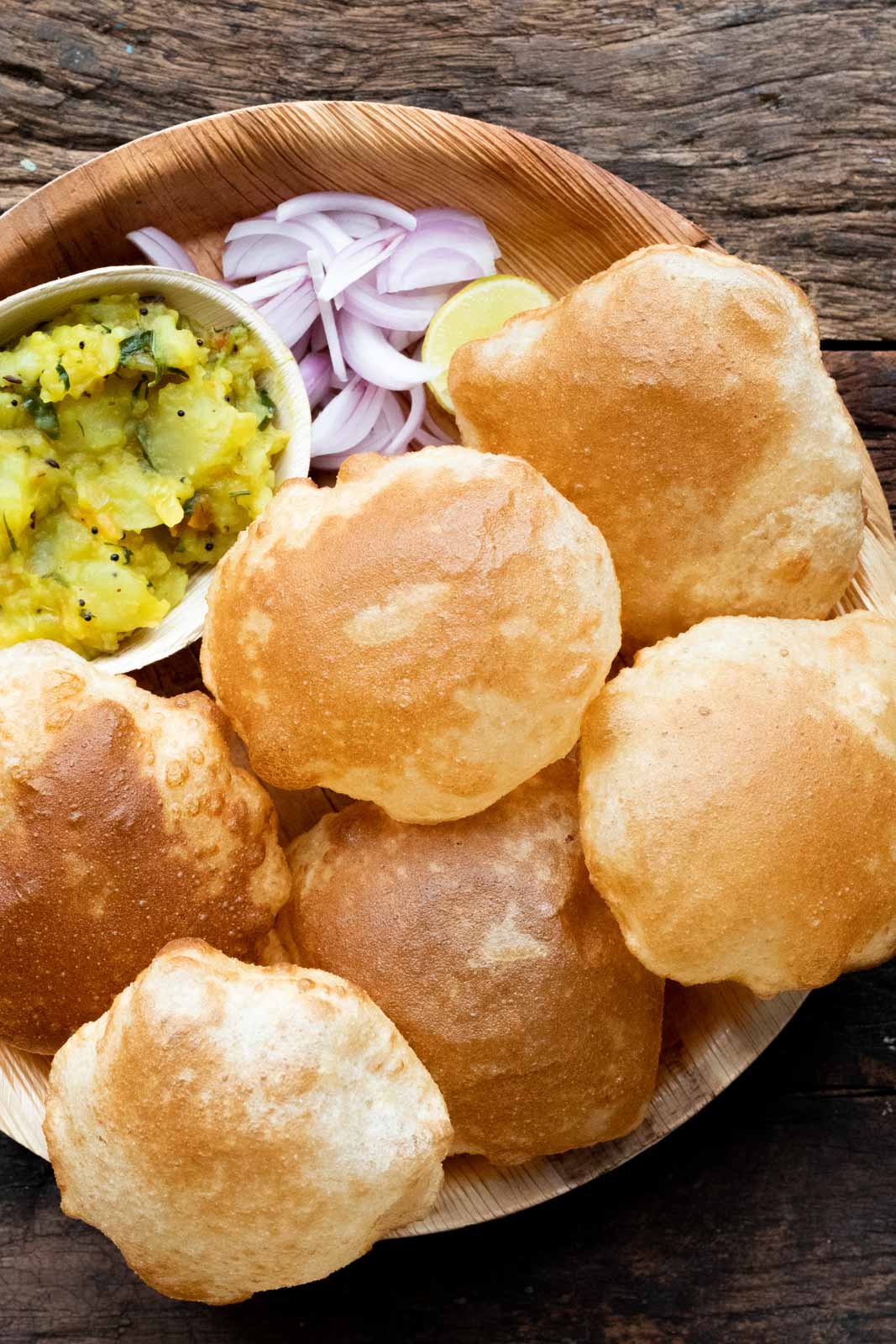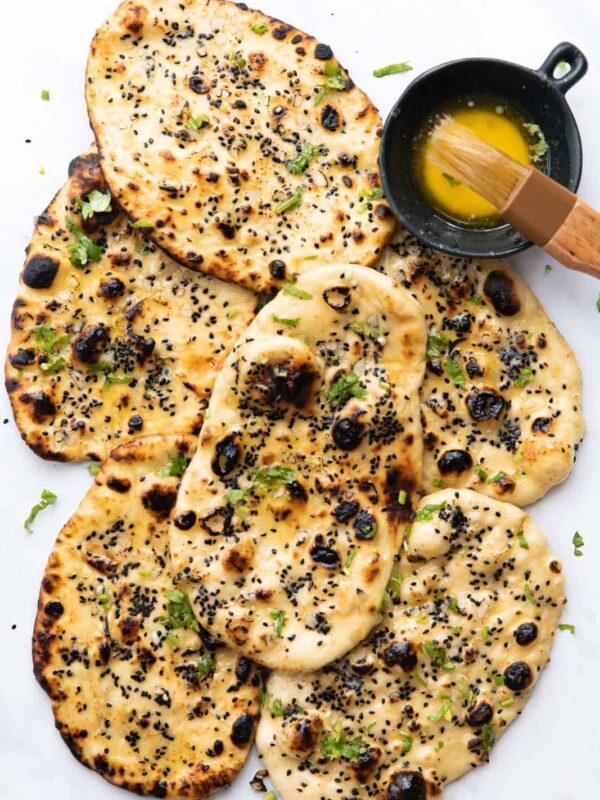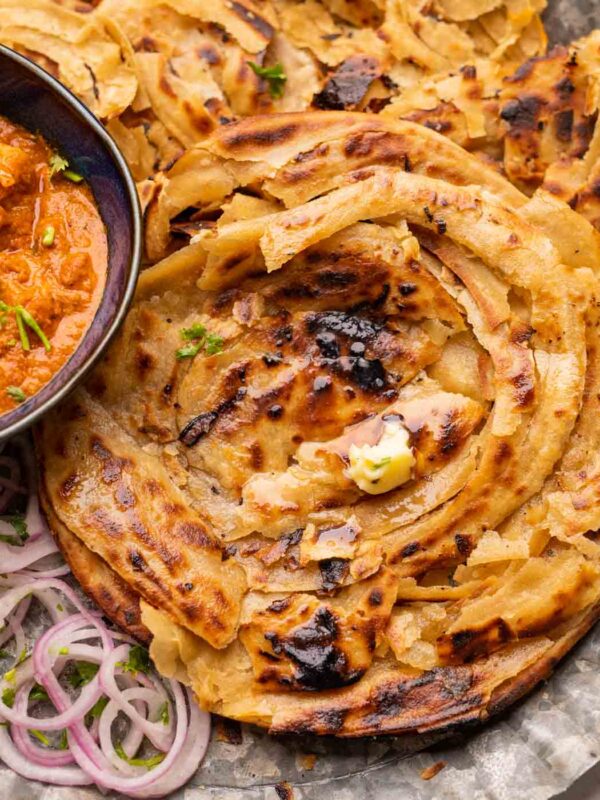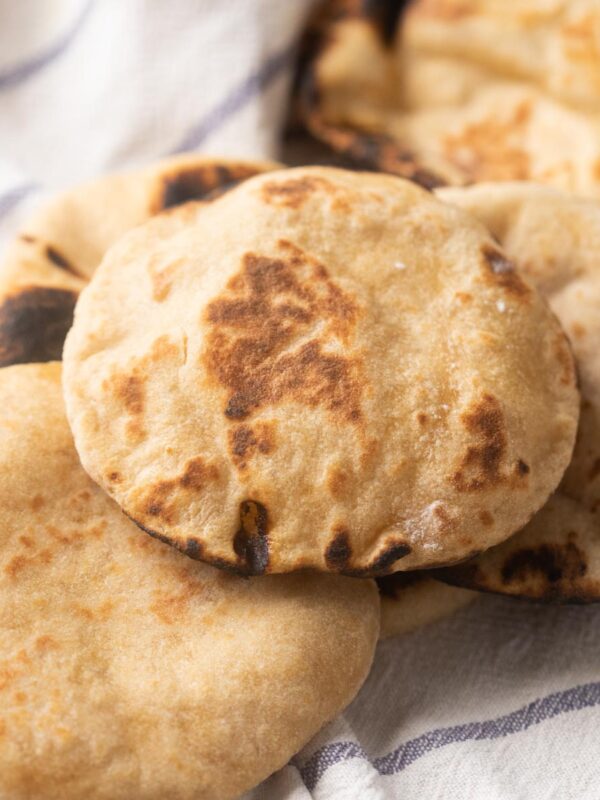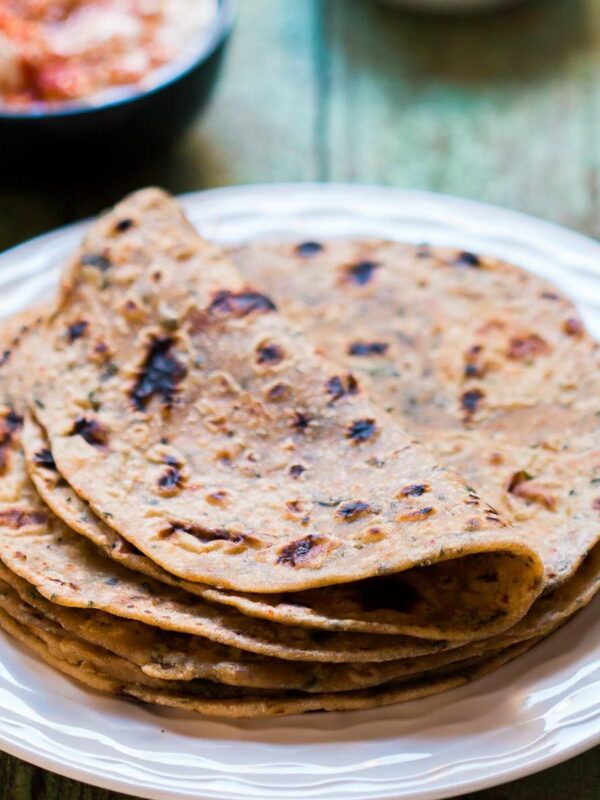on Nov 09, 2020, Updated Oct 20, 2024 Is there anything better in life than perfectly puffed up, light as air pooris? Pooris just bring back so many memories for me – my mum gave us kids little balls of dough to play with and we would watch in wonder as the puris puffed up in the hot oil. I’ve been making puris for years now, but I never really paid attention to the finer details. Off late, a lot of you asked me for tips on how to make restaurant style pooris, and that’s when I started recording and testing my puri recipe. So you know this poori recipe is fluffy, crispy, delicious and so satisfying!
Steps To Perfect Pooris
We did several trials to perfect this poori recipe and found out the the secret to making great pooris lies in these three things –
How to make the Dough + resting time How to roll out the puris to ensure the oil remains clean and there are no burnt bits How to fry them so they puff up and puris are light, not oily
Dough for Poori
Poori dough is made in the same way as the dough for rotis but with a lot less water. It has a comparatively stiff texture as opposed to the soft dough for rotis. The two main ingredients for the poori dough are atta (whole wheat flour) and water.
If the dough is too dry and doesn’t come together, add water one teaspoon at a time till it comes together Once the dough has been kneaded well, add a teaspoon of oil and knead again for a minute or two – this makes the dough smooth Also, poori dough shouldn’t be rested for too long – just five to ten minutes will do
Rolling out Pooris
Ideally puris should be round or oval in shape, but there is no judgement here. Even after years of practice, sometimes I still dish out puris in all sorts of shapes.
More Tips To Perfect The Poori Dough
In the video below, I’ve demonstrated how to make puris which are roughly the size of my palm. The thickness of the poori should approximately be about 1 mm (shown in video). If they end up being too thin, they won’t puff up properly. Too thick and they won’t cook well. Dip the ball of dough in a tiny amount of oil before rolling it out. The oil helps grease the dough and makes it easier to roll them out without sticking. Avoid using dry flour to dust puris (like we do for rotis). When dry flour comes in contact with hot oil, the flour particles will just burn and leave burn bits in your oil. And that’s an unpleasant taste. It’s important that the oil remains clean as we fry the puris. Pooris are such a fun food experience for kids! So if you have kids to entertain, don’t hesitate to use a cookie cutter on your rolled out dough and make fun-shaped puris for the kids!
How to Fry Fluffy Crispy Pooris
There are a few technicalities involved in the poori-frying process. Here’s a quick checklist before you begin:
Oil temperature: The pooris should be fried in hot oil to keep them from getting too oily or soggy. Do a temperature test in the beginning by putting a tiny piece of dough in the oil – it should sizzle and come to surface immediately. You can also add a pinch of salt to the oil which prevents puris from becoming oily. Best Oil for frying puris: Since pooris need to be fried in very hot oil, use oils with a high smoke point such as sunflower oil or rice bran oil. These will not smoke easily and will keep the oil clean Dropping the poori: Don’t just plop the rolled out poori flat onto the oil – Dangerous! The trick is to hold the poori vertically above the kadhai and gently slip it into the oil from one side. The fluff factor: Super crucial step – When the poori starts sizzling, pick up your skimmer and gently press the poori into the oil. As soon as the puri starts puffing up, turn it over and press it gently again from the other side. In a few seconds, the poori will start to become golden brown – that’s when it’s time to remove them. Each poori should take about 20-25 seconds to cook. You can roll them out before hand and fry them one after another. Or if you have someone to help you, you can fry them as and when they are rolled out.
Best accompaniments for Poori
Here’s a list of our favourite accompaniments for pooris! Some of these are super popular, some are an acquired taste! Here’s a list of side dish options to serve with your pooris:
Chana Masala – The best, spicy, north Indian dish to go with pooris – work up your appetite before this heavy meal Poori Bhaji – Simple potato-veggie-loaded bhaji and poori – all time favourite Poori Aloo – Ignore the carbs and dig into this sinfully satisfying dry side dish made of aloo, onions, peas, etc. Poori Chutney – In south Indian restaurants, poori is served with coconut chutney, and it is so addictive! Poori Korma – A richer variant of poori bhaji, this veggie korma one is for special occasions Poori Aamras – This combo is soooo underrated! When mango season is on, this is literally all we eat! Poori Shrikhand – Sweet and so delicious, this one is for all those with that insatiable sweet tooth And if you are craving pooris but don’t feel like making an accompaniment, grab that bottle of achar and a bowl of raita, and tuck in!
If you found my technique of making fluffy and crispy pooris helpful, do leave a comment below!
Watch How to make the Perfect Pooris
No Yeast Naan in 30 minutes (on the stovetop)
Lachha Paratha | Flaky Layered Flatbread
Whole Wheat Pita Bread Recipe
Kasuri Methi Parathas | Fenugreek Flatbread
